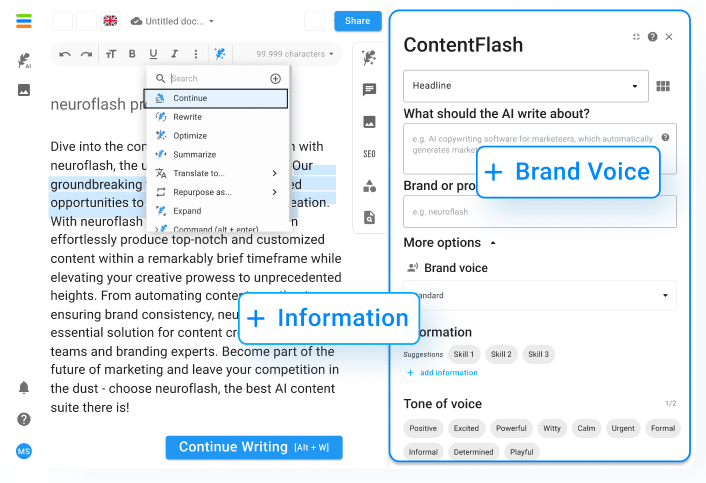Creating a successful marketing strategy is crucial for any business looking to differentiate itself from competitors and achieve a strong competitive positioning. However, many businesses struggle with identifying their target audience and selecting the right channels and tactics to reach them. In this article, we will explore how to identify your target audience, conduct market research, establish a strong brand identity, select effective channels and tactics, and measure the success of your marketing strategy through metrics and analytics.
Target Audience
Identifying and understanding your target audience is essential for tailoring your marketing message to their specific needs and preferences. To do this, you can use tools like customer surveys, focus groups, and social media analytics to gain insights into their purchasing habits, demographics, and psychographics. Once you have identified your ideal customer, you can then create buyer personas and customize your message to appeal directly to them.
One effective way to tailor your marketing message is by using language that resonates with your target audience. For example, if you are targeting younger consumers, you may want to use more informal language and social media channels, while for older demographics, you may need to use more formal language and traditional media channels like newspapers and radio.
Market Research
To gain insights into your industry and identify opportunities for differentiation, you need to conduct thorough market research. This involves analyzing industry trends, competitive landscape mapping, and SWOT analysis (Strengths, Weaknesses, Opportunities, and Threats). By doing so, you can identify gaps in the market, competitive advantages, and potential niches to target.
Additionally, it is important to analyze your competitors to differentiate your business from them. This can be done through competitor analysis, where you evaluate their strengths and weaknesses, pricing strategies, and marketing messages. By doing so, you can identify opportunities for differentiation and create a unique selling proposition (USP).
Branding
To differentiate your business and establish a strong brand identity, you need to create a compelling brand story and messaging. This involves identifying your Unique Selling Proposition (USP) and communicating it effectively to your target audience. Your USP can be based on factors like price, quality, customer service, innovation, or sustainability.
Another important aspect of branding is developing a unique visual identity, including a logo, color scheme, and typography. This will help your business stand out from competitors and create a memorable brand image.
Channels and Tactics
Choosing effective marketing channels and tactics is essential for reaching your target audience and achieving your marketing goals. This involves selecting a mix of channels, like social media, email marketing, search engine optimization (SEO), content marketing, and advertising, that align with your target audience and budget.
In addition to selecting the right channels, you also need to implement tactics that resonate with your target audience. For example, if your target audience is young and tech-savvy, you may want to focus on social media and content marketing, while if your audience is older and less tech-savvy, you may want to focus on traditional media channels like TV and radio.
Metrics and Analytics
Measuring the success of your marketing efforts is essential for evaluating your strategy and making adjustments based on data and feedback. This involves tracking key performance indicators (KPIs) like website traffic, conversion rates, customer engagement, and social media interactions.
By analyzing metrics and analytics, you can identify areas of your strategy that are working well and areas that need improvement. This will help you refine your marketing message, adjust your tactics, and achieve your desired competitive positioning.
Useful Tips
- Focus on your Unique Selling Proposition (USP) to differentiate your business from competitors.
- Use language and channels that resonate with your target audience to tailor your marketing message.
- Conduct thorough market research to identify industry trends, gaps, and competitive advantages.
- Analyze your competitors to identify opportunities for differentiation and create a unique USP.
- Track key performance indicators (KPIs) to measure the success of your marketing efforts and make data-driven adjustments.
Related Questions
How do I identify my target audience?
Identifying your target audience involves using tools like customer surveys, focus groups, and social media analytics to gain insights into their purchasing habits, demographics, and psychographics. You can then create buyer personas and customize your message to appeal directly to them.
How can I differentiate from my competition?
You can differentiate your business from competitors by conducting thorough market research, analyzing your competitors, and creating a unique selling proposition (USP) based on factors like price, quality, customer service, innovation, or sustainability. By doing so, you can identify opportunities for differentiation and create a compelling brand story and messaging.
What channels and tactics are best for my business?
The best channels and tactics for your business depend on your target audience and marketing goals. You may want to consider a mix of channels, like social media, email marketing, SEO, content marketing, and advertising, that align with your target audience and budget. In addition,you should implement tactics that resonate with your target audience, whether it be through social media or traditional media channels. Finally, measuring the success of your marketing strategy is crucial, and tracking KPIs such as website traffic and conversion rates can help identify areas that need improvement. By following these tips and continuously refining your strategy, you can achieve a strong competitive positioning and stand out in a crowded market. Don’t forget to stay up to date with the latest marketing trends and technologies for continued success. Good luck!


















